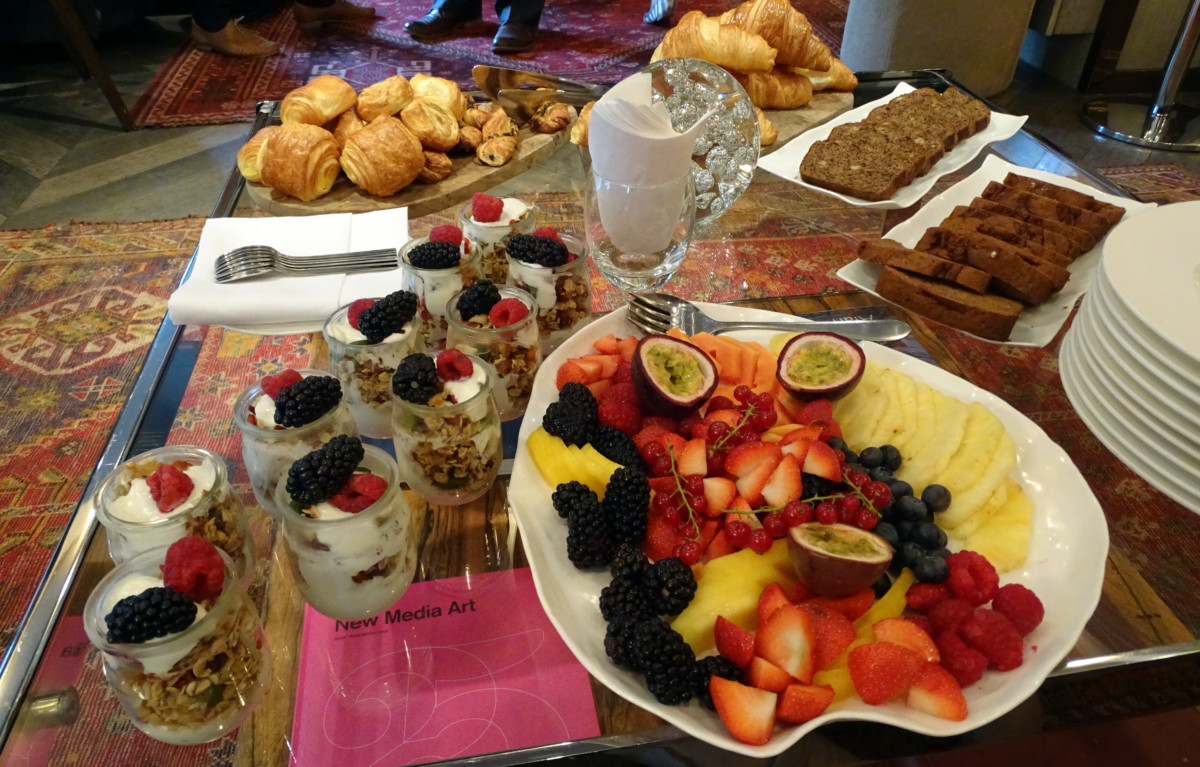Last year the topic event technology was so popular, all industry events held sessions about #eventtech. Then other topics got industry attention, especially Brexit and security, and I haven’t attended any session since mid-2015 about #eventtech. But with the fast and changing phase of technology, it was time for me to revise what’s out there and what other event planners are experiencing so I decided to attend EWL Breakfast event about “How to successfully adopt event technology” hosted by Helen Moon, the founder of EWL Club and Emma Stoker, Vice President, Events, Roadshows & Hospitality at Barclays UK. The event took place at the Belgraves Hotel.

After giving a short introduction about Barclays, their event and digital strategies, the discussion opened to the audience to share experiences and challenges. Audience represented agencies, in-house planners, media, technology providers, production companies and venues.
To kick off the discussion, first question was “what clients are looking for from venues in terms of technology?” Here the answer was very simple – wifi. Reason for this is that some clients will bring their own technology to ensure data security, so they need reliable wifi to support it.
Then we discussed the different challenges experienced with event technology. Major challenge, from an agency point of view, is to sell it to the stakeholders. Sometimes clients think that they need an event app, for example, but actually they don’t and it’s important not using it for the “sake of it”, but only if it provides a solution. When an agency is involved in recommending event technology, they should be able to give an informed advice and explain clients why an event app is the right or wrong solution for them and how it can deliver ROI. If they fail in doing so they can damage their reputation.
From a corporate point of view, their challenge is that many delegates are still using Blackberry phones. It slowly changes as younger generation is insisting on using smartphones, which are more compatible with event apps. Apps are great to get away from brochures but older generation still insist on using print. So, instead of having a brochure or app only, try and convince people to come away from the paper version by showing them how the app works, but still have both available at the event. By giving tangible examples and showing why it’s better, planners are more likely to succeed and have higher conversion rates. It might not be possible to change delegates’ behaviour and there is no needs to push them use something they are not comfortable with. Alternatively, target business areas where you know delegates will opt for the digital option.
If clients insist on using an event app, it’s recommended to start with single features, and gradually introduce others. For example, start with a voting app, and if it works gradually introduce online agenda, attendee networking, push notifications etc.
In terms of data security, it was recommended to use preferred technology suppliers, and when applicable, those who’ve gone through company security and compliance process. If clients are not able to download apps then the company will create a web based option. If clients will see the benefit of using the event app pre event they will be more likely to download it. Adoption and engagement rates increase when the MC encourages and constantly reminding using the app.
Another challenge is that not everyone knows how to use event technology and some clients would like to have representatives from the technology company with them on-site in case something goes wrong. Clients are not experts.
Next topic on the agenda was social media. Corporates manage social media differently, some have in-house teams responsible for social media and others outsource it. It depends on the business, social media strategy and limitations on what they can and can’t share online. Some don’t have a dedicated social media team but it’s managed by marketing and communication teams.
Companies who work with tech savvy clients must be on social media to understand them because if they don’t use the same channels as their customers they will be left behind. In experiential events, in particular, even if there is no financial return, there will be memories documented on social media and that’s what the brands want. Lastly, social media extends event life cycle and allows spreading the word as much as possible and as quickly as possible.
Talking about current trends, we all agreed that the newest piece of event technology is virtual reality (VR). Stakeholders want to use it because it’s “the next big thing”, but as planners we must ask whether it’s relevant. Main criticism was that the moment attendees put it on they lose interaction with other people attending the event. At conferences the whole point is engagement and virtual reality is taking away the engagement part because it becomes an individual experience.
There are areas where virtual reality can be used effectively without taking from engagement. In venue sales, for example, if you have the headset there is no need to set-up the venue each time, so when clients come for a site-visit they can experience it via the headset and the chances for booking the venue increase. Another area is fundraising events. According to an experiment mentioned by one of the attendees, showing the cause makes the experience more emotive because attendees can actually “experience” the cause, as opposed to a video, and then people will be more likely to donate.
Lastly, if you want to engage people with VR, give it to people who are not attending the conference so they can join-in remotely and still be part of the experience.
Talking about engagement, who is the most engaged person in the room, the one on his/her phone or the one looking at the speaker? Today, the person on the phone can be as engaged, if not more, as the one attentively listening to the speaker. But how about trying to make people be present at event without being on the phone? Someone mentioned the latest Coldplay concert and the LED wristbands they distributed, known as Xylobands. One of the EWL attendees who attended the concert said that she noticed people were more engaged and didn’t have their phones up in the air but the wristbands instead. It changed the engagement and people had a different experience to remember. You can see an example here.
But, is there any #eventtech out there that keeps engaging people three, or six months after the event? It was suggested, that in order to keep engaging event attendees after the event, planners need to personalise their communication. While technology is changing, personalisation stays the same and planners should focus on building relationships over time. Good practice is to have a good Customer Relationship Management (CRM) system in place to know all touch points and when someone engages with your event or content. Another way is engaging via content marketing. By putting content on social media and blog in forms of interviews, updates, behind the scenes etc., event planners can extend their event lifecycle. When events stop producing content after the event, they risk being forgotten.
Event technology should be also accessible to everyone, planners should consider whether someone might have a sight or hearing problem that impacts their ability to interact with this technology. Each person in the room should be able to use technology and be engaged.
One hour was too short to cover this big topic and I hope to continue this discussion! Last piece of advice I can share with you from this event is that if you are not passionate about event technology you can’t sell it to your stakeholders.




Nice article. thanks for sharing
Interesting insights, especially the points about long-term attendee engagements – thanks!
Thank Alexander, indeed, attendee engagement must continue also after the event.